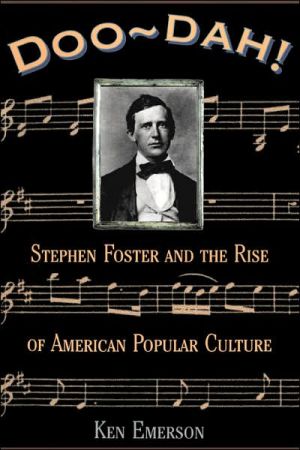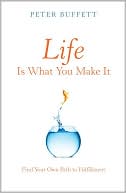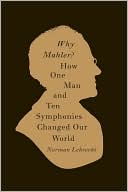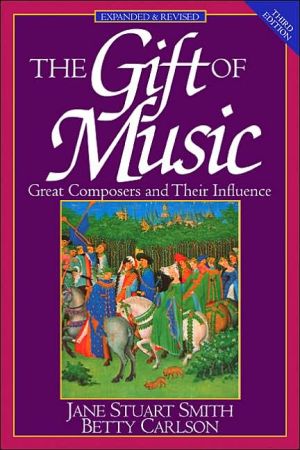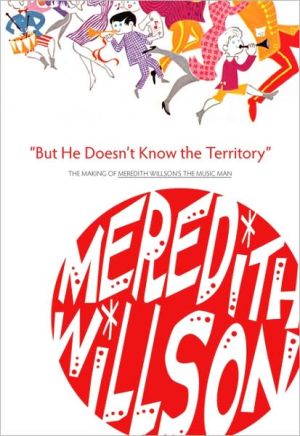Doo-Dah! Stephen Foster and the Rise of American Popular Culture
Stephen Foster (18261864) was America's first great songwriter and the first to earn his living solely through his music. He composed some 200 songs, including such classics as "Oh! Susanna,” “Jeanie with the Light Brown Hair," "Old Folks at Home (Way down upon the Swanee River),” and "Camptown Races (Doo-dah! Doo-dah!).” He virtually invented popular music as we recognize it to this day, yet he died at age thirty-seven, a forgotten and nearly penniless alcoholic on the Bowery. The author...
Search in google:
"Stephen Foster (1826–1864) was America's first great songwriter and the first to earn his living solely through his music. He composed some 200 songs, including such classics as ""Oh! Susanna,” “Jeanie" New York Times Book Review - Margo Jefferson [A] vigorous, thoroughly researched, amiably chatty tour through his life and times.
\ Margo Jefferson[A] vigorous, thoroughly researched, amiably chatty tour through his life and times. \ —New York Times Book Review\ \ \ \ \ Robert Christgau[In] the first true biography of Foster in more than sixty years and the only good one . . . Emerson lays out this complex story with grace, originality, dispatch, and insight. -- The Los Angeles Times\ \ \ BillboardEssential for all cultural truth-seekers.\ \ \ \ \ Publishers WeeklyEmerson, essayist and editor, has written about music for the past 25 years. Now he explores the roots of early popular music while tracing the tragic life of composer Stephen Collins Foster (1826-1864), who wrote nearly 200 songs. Some became much-loved American classics"Oh! Susannah" (1848), "Camptown Races" (1850), "Old Folks at Home" (1851, aka "Swanee River"), "My Old Kentucky Home" (1853), "Jeanie with the Light Brown Hair" (1854) and "Old Black Joe" (1860). Yet Foster is a songwriter whose tunes are better known than he is: born on the 4th of July in what is now Pittsburgh, Foster and his songs were identified with the Southalthough he had lived only in the North, and had written about the South before ever having seen it. In addition to his sentimental songs and parlor ballads, he also wrote his "Ethiopian Melodies" for E.P. Christy's Minstrels. Foster had a "genteel reluctance to acknowledge these blackface ditties as his own" and this, combined with his own poor business sense, meant that others pocketed the profits. Even as his tunes were heard internationally, he was going broke, eventually composing in a Bowery barroom and dying a penniless alcoholic at age 37. Although fewer than 30 of the composer's letters survive, Emerson has sought out almost every known Foster fact. He also aims his spotlight at other musical personalities of the period, and provides further illumination of how his songs have been incorporated into popular contemporary melodiessuch as Disney's "Zip-A-Dee-Doo-Dah" (Song of the South, 1946) from the chorus of the 1834 blackface song, "Zip Coon." The book abounds with such linkages, racial fusions, and present-day cultural reverberations. Emerson's exhaustive research (indicated by an 18-page bibliography) has been meticulously worked into a vivid portrait of 19th-century America.\ \ \ \ \ Library JournalStephen Foster might be considered America's first professional composer. His songs include "Oh! Susanna," "Old Folks at Home," and "Old Black Joe," tunes so enduring that they are sometimes considered folk songs. Yet Foster died penniless and didn't help his case for posterity by frequently selling all the rights to his songs, or worse, in the case of "Old Folks at Home," being so foolish as to sell the credit for the song to E.P. Christy for a pittance. Nonetheless, Foster's musical creations have influenced musicians as diverse as Antonin Dvorak, Charles Ives, and Al Jolson. Emerson, an editor at The New York Times Magazine, endeavors in this well-researched and documented book to reveal the man behind the music. Emerson discusses Foster's life and music (with emphasis on the lyrics) within the context of the events and personalities of the era. The book goes a long way towards dispelling the myths that have surrounded the composer. Recommended for both public and academic libraries. -- Michael Colby, Univ. of California, Davis\ \ \ \ \ Library JournalStephen Foster might be considered America's first professional composer. His songs include "Oh! Susanna," "Old Folks at Home," and "Old Black Joe," tunes so enduring that they are sometimes considered folk songs. Yet Foster died penniless and didn't help his case for posterity by frequently selling all the rights to his songs, or worse, in the case of "Old Folks at Home," being so foolish as to sell the credit for the song to E.P. Christy for a pittance. Nonetheless, Foster's musical creations have influenced musicians as diverse as Antonin Dvorak, Charles Ives, and Al Jolson. Emerson, an editor at The New York Times Magazine, endeavors in this well-researched and documented book to reveal the man behind the music. Emerson discusses Foster's life and music (with emphasis on the lyrics) within the context of the events and personalities of the era. The book goes a long way towards dispelling the myths that have surrounded the composer. Recommended for both public and academic libraries. -- Michael Colby, Univ. of California, Davis\ \ \ \ \ BooknewsThis biography of the American songwriter explains how the cultural and political tenor of his times influenced his work, and how the nature of that influence and the resulting music in turn influenced the way American popular music is composed and experienced. Annotation c. by Book News, Inc., Portland, Or.\ \ \ \ \ Margo Jefferson[A] vigorous, thoroughly researched, amiably chatty tour through his life and times. -- The New York Times Book Review\ \ \ \ \ Kirkus ReviewsEmerson gives readers a marvelous social and historical context in which to consider 19th-century America's most popular songwriter. Race is the primary issue of Doo-Dah!, and Emerson (a former editor of The New York Times Magazine) does not shy away from stating plainly that as a young man Foster was a pro-slavery racist who wrote minstrel songs in a grotesque approximation of black English. However, Emerson points out, Foster "was among the first white boys to do what white boys . . . have been doing ever since—mimicking black music, or what they think is black music and black style." As a result of living in Pittsburgh—a main hub on the Underground Railroad—and being exposed to the ideas of people like militant abolitionist and first black U.S. Army major Martin Delany and Harriet Beecher Stowe, Foster became able to consider blacks as human beings and not simply the butt of jokes. Emerson admits, "There's no evidence that . . . Foster actually encountered Delany," but there is no question that the abolitionist's presence was felt all over the nation, and his presence in this book serves as a strong historical marker. Similarly, repeated references to the British Romantic poets and to Victorian novelists, like minstrelsy fan Charles Dickens, serve as the cultural backdrop for Foster's synthesis of European and African-American styles. Foster became a begrudging Unionist during the Civil War, though his problems with alcohol often caused him to lapse into his old racist ways, and he died at age 37, in New York City, a literal Bowery bum. This is perhaps the only way in which Foster's career matches that of Elvis Presley or Kurt Cobain, who are among the20th- century musicians to whom Emerson compares Foster. But this is the only serious fault in an otherwise fine work of cultural history.\ \
